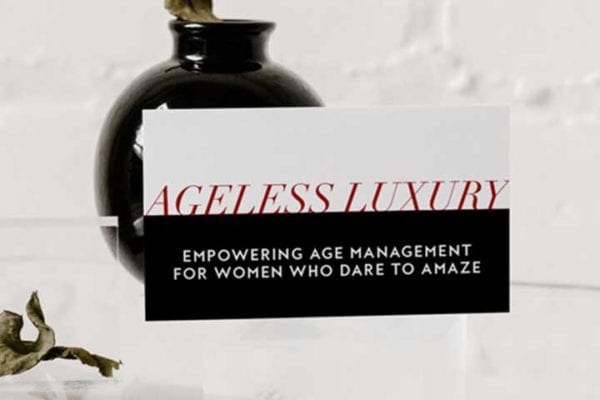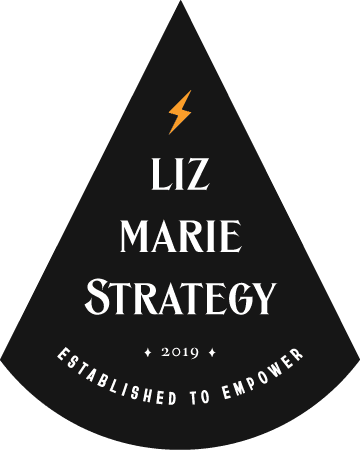Tell me what you do and why I should care. Go!
If that makes you feel like a deer in headlights, then you need to work on your 30-second elevator pitch. I’m going to show you how.
I’m a brand strategist and creative director, and I work with women and BIPOC-owned brands to help y’all level up, get clear on your brand, overcome all the chaos in your head so that we can all shatter glass ceilings and build generational wealth. That’s why we’re here! And it starts with figuring out what you’re doing and how to tell people about it. That’s pretty important.
I’m going to show you my tried and true method for creating an elevator pitch. I create them as part of my brand blueprint for all of my brand strategy documents. It’s a simple, step-by-step, fill-in-the-blank type of process and I’ll be sharing a bunch of examples from my work to help along the way.
What is an elevator pitch anyway?
An elevator pitch is essentially a single sentence that very quickly and succinctly explains:
#1 What you do
#2 Who you do it for
#3 Why they should care
That’s it! But those little buckets can be a little overwhelming for people to get down in such a succinct, simple way. I use a straightforward, fill-in-the-blank type of approach to put those three pieces together.
Breaking down the parts
Let’s dig into the three key parts, and then I’ll show you a couple of ways to fit them together to make that pitch sentence.
#1 Who do you help?
The first part is who you help. This can’t just be like “people”. Ideally, it is something pretty specific about your audience that identifies as either their psychology or a demographic or something that makes them a unique group that you’re serving for a specific reason (check out my video on identifying your target audience for more help on this). The idea is to be pretty specific, for example, tired moms, teething toddlers, angsty teens, businesses who want to reach seven figures — some specificity about who it is that you’re serving.
#2 What do you do for them?
The second piece is the what. This can either be what you do for them or what you help them do. Essentially, this is your contribution; it’s what you bring to the table. It can be super straightforward like we make autoparts, bake cookies or sell groceries, or it can be more emotional and transformative like we transform your relationship with food, help you get into better shape, or help you overcome depression. Like it can be straightforward or a little more broad. The what really depends on on your audience and on the next piece, which is the benefit. You’ll figure out what makes the most sense for your business.
#3 Why does that matter?
This is all about the outcome. Why should they even care that you’re helping them do this or that you make this thing that they need? It’s all about the benefits – or positive outcomes – that the whole experience of buying from you delivers to them. And this is the missing piece for most people. It tends to be the hardest thing to identify because you have to think about it differently. We are taught to talk about what we do, not why what we do actually matters.
So you want to think about benefits — what is the end goal for these people? What do they actually get from working with you? Do they get confidence, save money, save time, feel empowered, feel more beautiful or turn heads when they walk down the street? Like what do they actually get from what you’re giving them? That is the “impact” of your contribution.

Putting the pieces together
So when it comes to actually going about this, make a little box or section in a notebook or on a piece of paper for each of these sections and brainstorm different ways to describe them. You might come up with 10 or 15 different ways to describe the benefit or talk about what you do, and that’s okay. Ultimately, you’re going to pick the ones that are the best fit, and piece them together in a way that really rolls off the tongue and flows. There are two basic structures that I use to make elevator pitches.
#1 I/We help [WHO YOU HELP] do [WHAT YOU HELP THEM DO] so that [WHY IT MATTERS].
Again, I help these people do this thing so that they have this benefit.
#2 I/We do [WHAT YOU DO] that helps [WHO YOU HELP] to [WHY IT MATTERS].
So, we do this thing that helps these people have this positive outcome.

Let’s look at some examples:
We make active care products that help everyday athletes feel great, perform better, recover faster, and keep doing what they love.
What: make active care products
Who: everyday atheltes
Why: feel great, perform better, recover faster, and keep doing what they love
(My own elevator pitch!)
I help women and BIPOC-owned businesses overcome brand chaos and level up so that we can shatter glass ceilings and build generational wealth.
Who: women & BIPOC entrepreneurs
What: overcome brand chaos and level up their brand
Why: shatter glass ceilings and build generational wealth
I help Women of Color revolutionize their relationships with money so that we can get the wealth and freedom we deserve.
Who: Women of Color
What: revolutionize their relationship with money
Why: getting the wealth and freedom that we deserve
We take the guesswork out of healthy eating so that you feel empowered to eat good and feel even better.
Now, notice how this one is a little different? It doesn’t have a “who” because it’s structured to speak directly to its audience, almost like a call-to-action. But, you could easily insert who you’re helping right into that beginning section.
You’re speaking to the who
What: take the guesswork out of healthy eating
Why: feel empowered to eat good and feel even better
Hopefully, this is all making sense. Once you break it down into these bite-size pieces, it’s pretty easy to fit it all together. The goal is to keep it as simple as possible. Don’t overthink it and you can always rewrite it again. So just get something down, practice it, get used to saying it, and go tell your story out into the world!!
If you want to try it out, download my worksheet on how to create your own elevator pitch.
Until next time, stay badass!
Download the Luxury Branding Checklist
Trying to maximize the luxury in your own branding? Download my checklist to see which tactics you're already using, and find new ideas to implement.

